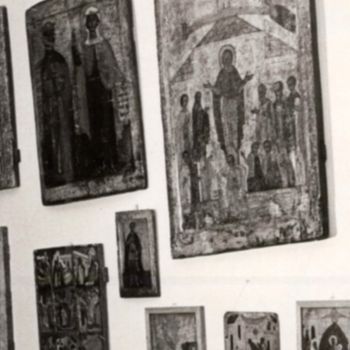Icons
“I managed to collect a large collection of icons: I had approximately hundred and fifty wooden boards painted between 15th and 17th century” (from the memoirs of George Costakis).
Even if Costakis had not left Russia an invaluable collection of avant-garde paintings, the donation of more than fifty icons to the Andrei Rublev Museum alone in 1977 would have inscribed his name in the annals of outstanding benefactors. According to George himself, his interest in collecting icons began after the war, that is, after he became interested in the avant-garde. Costakis immediately noticed the extensive connection between ancient Russian painting and abstract works of the early twentieth century.
Guided only by his own taste, he acquired the rarest examples of monumental paintings (fragments of Novgorod frescoes of the 12th century), embroideries (the shroud of the 17th century “Entombment"), as well as icons of almost all old Russian schools (Moscow, Tver, Novgorod, Rostov, Yaroslavl, The Stroganov script).
Many datings and stylistic features of his icons are still being clarified, but their highest historical and cultural significance is beyond any doubt. Thus, "Our Lady of Tenderness" of the 16th century (the era of Ivan the Terrible) is considered to be one of the most important monuments of Rostov school of painting.
